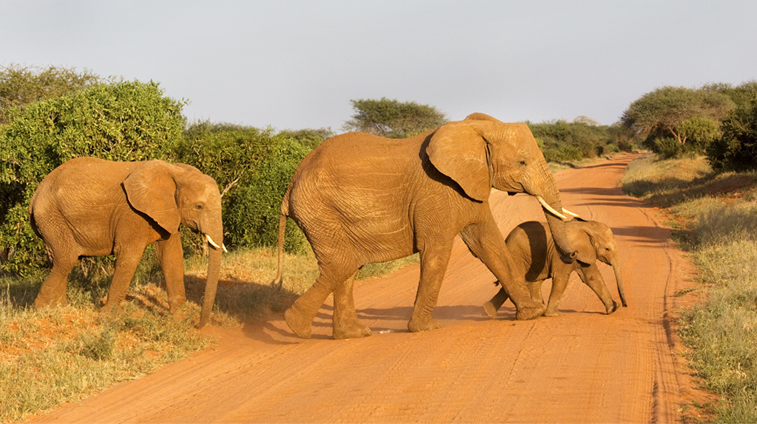
The African Elephant, or Loxodonta africana, is listed as endangered on The International Union for the Conservation of Nature Red List of Threatened Species as of this year. The mighty elephant is one of the Big Five game animals, joined by lions, leopards, rhinos, and the African buffalo. The phrase “Big Five” used to refer to the difficulty and danger of hunting these animals, which is part of what led to their decreased populations. The phrase Big Five has been reclaimed and is now used on safari, almost as a checklist: These are the animals we think of when we think of African wildlife, and we hope to see them on tour.
The history of the Big Five is not lost on us, and on our The Plains of Africa tour, you can be confident you are Travelling with a company that is committed to the responsible care of animals and their welfare. We partnered with industry experts to assure any interactions with animals on our tours meet not only our own high standards, but industry best practices for animal welfare. Learn more about our animal welfare audit and tips for interacting with animals whilst Travelling here.
Whilst you are waiting to start your own search for elephants, here are some fast facts about these super smart giants:
Mother Knows Best
Mothers are the core of an elephant’s social group. Elephants carry their babies over a 22-month pregnancy and they stay with their male young for 10-14 years in the wild, whilst female elephants may have a bond with her mother lasting 50 years or more. Matriarchs lead their herd and female elephants help look after each other’s calves.
Bonds of Friendship
Elephants are emotionally intelligent! Elephants can form lifelong relationships with their families and other members of their herd. Elephants have been known to show that they will pause in remembrance when passing a place where a loved one died. Mothers also grieve the loss of calves.
Built-In Snorkel
Elephants are natural-born swimmers and sometimes duck underwater whilst they swim. Whilst underwater, they can use their trunk to breathe above water. The trunk contains thousands of muscles and allows for smelling, regular breathing and lifting, but snorkelling is the most interesting use!
Time for Snacks
Elephants are large and it requires a lot of nourishment to keep those bodies moving. These herbivores eat grasses, bushes, roots, flowers, leaves and tree bark in the wild. They spend most of their days eating!
We see much of ourselves in elephants because of their intelligence and feelings, but how well do you really know these creatures? Put your elephant knowledge to the test in our World Elephant Day quiz here!

